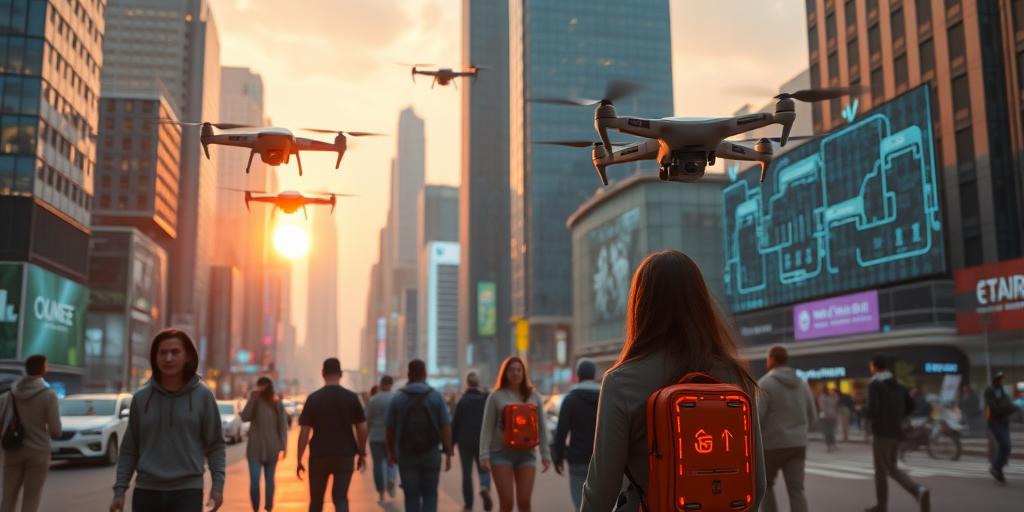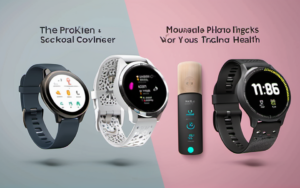Emerging technologies are rapidly changing the way we live, work, and interact with the world around us. This evolution is particularly evident in the realm of gadgets, where new innovations are constantly shaping our experiences and creating a future where technology is seamlessly woven into our lives.
The Impact of Emerging Technologies on Gadgets
Introduction
Emerging technologies are revolutionizing the gadget landscape, driving advancements in functionality, connectivity, and user experience. From AI-powered assistants to VR/AR experiences, these technologies are transforming how we use, interact with, and even perceive our devices. This blog post explores the profound impact of emerging technologies on the gadgets we use every day.
Artificial Intelligence (AI)
AI is rapidly infiltrating our gadgets, making them smarter and more intuitive. This technology is enabling devices to learn from our preferences, understand our needs, and even anticipate our actions.
AI-Powered Assistants
AI-powered assistants like Siri, Alexa, and Google Assistant have become ubiquitous, transforming our smartphones into personal assistants. They can answer questions, set reminders, control smart home devices, and even make recommendations based on our preferences.
Smart Home Devices
AI is also driving the rise of smart home devices, such as smart thermostats, security cameras, and appliances. These devices use AI to learn our habits, optimize energy consumption, and enhance our safety and comfort.
Personalized Recommendations
AI algorithms are constantly analyzing our data, including our browsing history, purchase records, and social media activity, to personalize our experiences. This technology is used by streaming services like Netflix and Spotify to recommend content based on our tastes, and by e-commerce platforms like Amazon to suggest products we might be interested in.
Internet of Things (IoT)
The Internet of Things (IoT) is connecting everyday objects to the internet, creating a network of devices that can communicate and interact with each other. This connectivity is leading to a new generation of gadgets that are more integrated and responsive to our needs.
Connected Devices
IoT is empowering a wide range of connected devices, from smartwatches and fitness trackers to smart refrigerators and cars. These devices can collect data, share information, and respond to commands, making our lives more efficient and convenient.
Smart Cities
IoT is also driving the development of smart cities, where sensors and data analytics are used to optimize traffic flow, manage resources, and improve public safety.
Remote Monitoring
IoT enables remote monitoring of devices and systems, allowing us to control and manage them from anywhere in the world. This technology is used in healthcare for remote patient monitoring, in agriculture for precision farming, and in industry for predictive maintenance.
Virtual and Augmented Reality (VR/AR)
VR/AR technologies are blurring the lines between the physical and digital worlds, creating immersive experiences that enhance our understanding and interaction with information.
Gaming and Entertainment
VR/AR is transforming the gaming industry, allowing players to immerse themselves in virtual worlds and interact with characters and environments in unprecedented ways. AR games like Pokemon Go have also become wildly popular, bringing virtual creatures into our real-world surroundings.
Training and Education
VR/AR technologies are being used to create immersive training simulations for industries like healthcare, aviation, and manufacturing. They are also being used in education to create interactive learning experiences that bring textbooks to life.
Retail and Design
VR/AR is changing how we shop and design. VR allows customers to virtually try on clothes or preview furniture in their homes, while AR can overlay product information onto real-world objects.
5G and Beyond
The rollout of 5G technology is revolutionizing wireless communication, providing faster data speeds, lower latency, and enhanced connectivity. This technological advancement is having a profound impact on gadget development.
Faster Data Speeds
5G enables lightning-fast download and upload speeds, making it possible to stream high-resolution video, download large files, and access online services with minimal lag.
Low Latency
5G’s low latency allows for near-instantaneous communication, making it ideal for real-time applications such as gaming, virtual reality, and remote surgery.
Enhanced Connectivity
5G provides more reliable and consistent connectivity, allowing for greater device density and improved coverage in urban and rural areas. This enhanced connectivity is crucial for the development of smart cities, connected cars, and other IoT applications.
Biotechnology and Wearables
Biotechnology and wearable technology are merging to create gadgets that monitor our health, fitness, and even our emotions.
Health Monitoring
Wearable devices like smartwatches and fitness trackers can monitor our heart rate, sleep patterns, and activity levels, providing insights into our overall health.
Fitness Trackers
Fitness trackers use sensors and algorithms to track our steps, distance, calories burned, and sleep quality, helping us to stay motivated and achieve our fitness goals.
Personalized Medicine
Biotechnology is enabling the development of personalized medicine, where treatments are tailored to an individual’s unique genetic makeup. Wearable devices can collect data that can be used to inform these personalized treatments.
Conclusion
The impact of emerging technologies on the gadgets we use is undeniable. From AI-powered assistants to VR/AR experiences, these innovations are transforming how we interact with the world around us. The future of gadgets holds immense potential for further advancements, driven by continued research and development in these transformative technologies.
Future Trends
As emerging technologies continue to evolve, we can expect to see even more sophisticated and integrated gadgets. AI will become increasingly powerful, enabling devices to learn and adapt to our needs with greater precision. The IoT will expand to connect even more objects, creating a truly interconnected world. VR/AR technologies will become more immersive and realistic, blurring the lines between the physical and digital worlds.
Ethical Considerations
As with any technological advancement, it is crucial to consider the ethical implications of emerging technologies. AI algorithms can perpetuate bias, VR/AR experiences can be addictive, and the collection of personal data raises privacy concerns. It is essential to develop ethical frameworks and regulations to ensure that these technologies are used responsibly.
The Role of Innovation
The rapid pace of innovation in emerging technologies is driving constant change in the gadget landscape. This dynamic environment presents both opportunities and challenges. It is essential for manufacturers, developers, and consumers to stay informed about these advancements and to embrace the potential of these technologies while addressing the ethical considerations that come with them.




